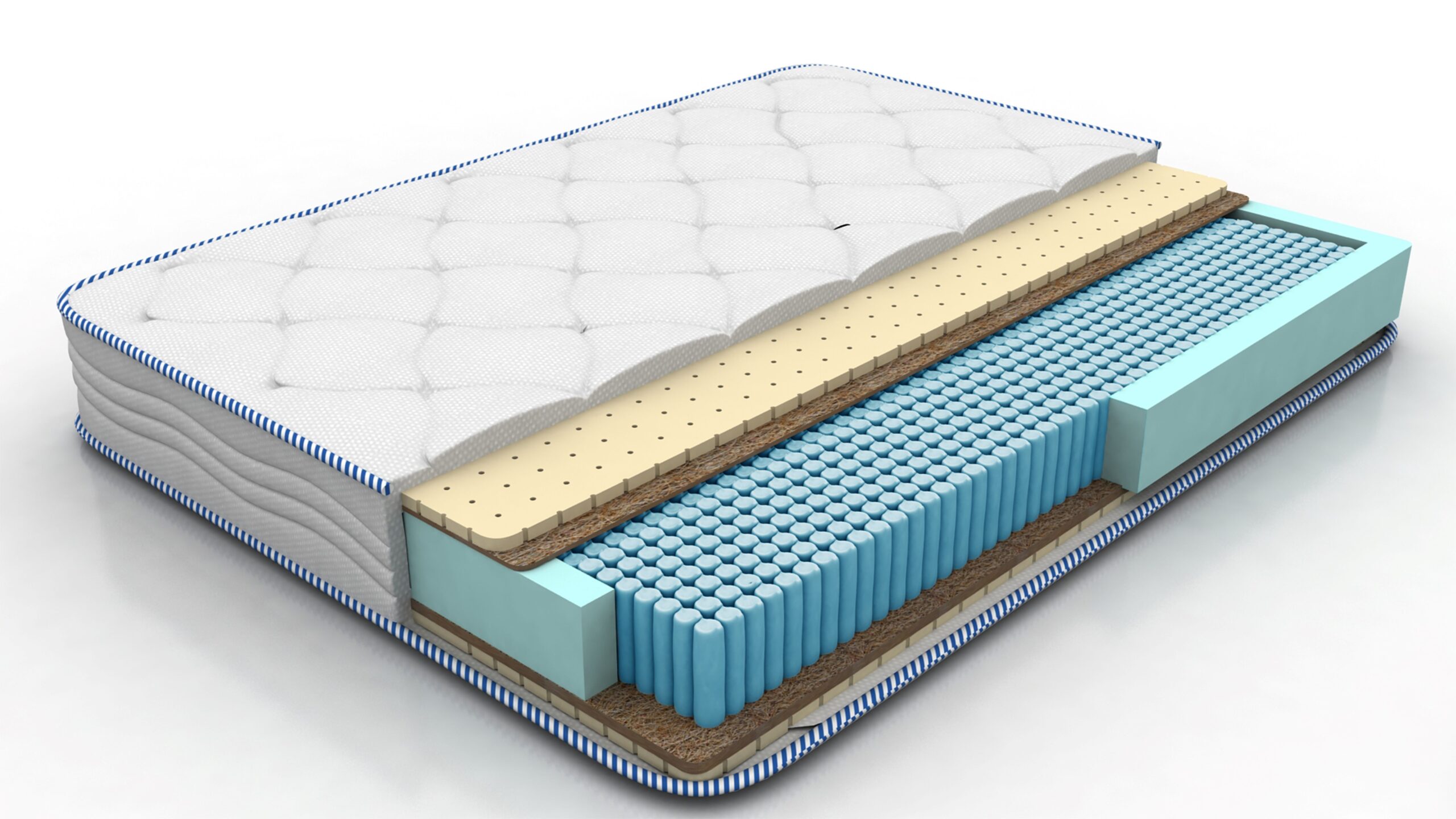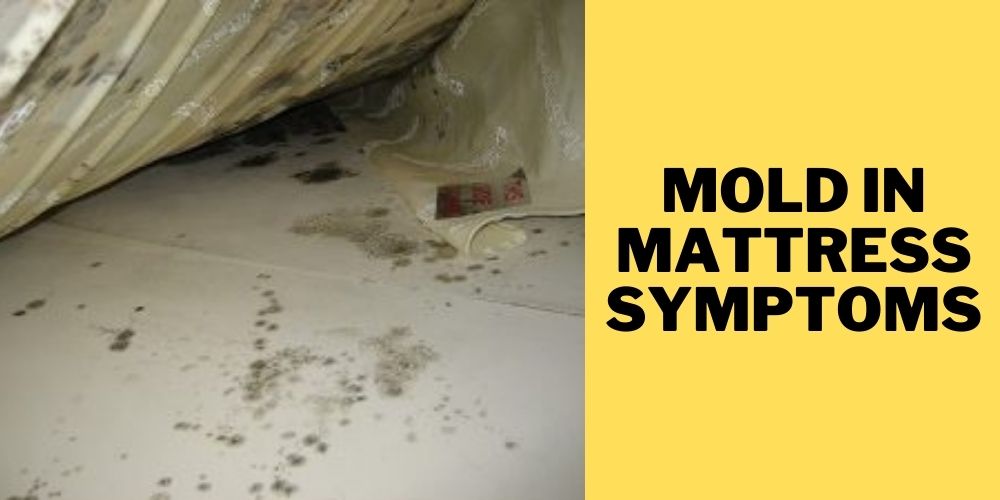For most of us, our mattresses are our havens, the places where we spend the most time resting and recovering. But what happens when our haven is placed directly on a cold, hard floor? Does sleeping on a mattress on the floor increase the chances of mold growth, leaving us tossing and turning with more than just sleeplessness? It’s a question that’s been debated for years, and while there’s no simple answer, understanding the factors involved can help you make informed choices about your sleeping setup.

Image: www.indoordoctor.com
My own experience with this question came during a period of apartment hunting. I was tired of the creaky old bed frames in my previous apartment and thought a mattress on the floor would provide the ultimate minimalist sleep. However, as I researched the potential downsides, I discovered that mold was a real concern. I was surprised to learn that sleeping on the floor wasn’t inherently bad, but it did introduce new factors that could lead to unwanted growth.
Understanding the Mold Risk Factors
So, why is mold a potential concern when sleeping on the floor? The answer lies in the environment and the factors that contribute to mold growth. While it’s true that mold can grow anywhere with the right conditions, placing your mattress directly on the floor can shift the balance of those conditions.
Moisture is Key
Mold thrives in moist environments. Even a small amount of moisture can provide enough sustenance for mold spores to flourish. When your mattress is on the ground, it’s more susceptible to moisture coming from the floor itself. This can happen due to:
- Leaks: A leaky pipe or a sudden downpour can lead to moisture seeping into your floor and potentially reaching your mattress.
- Humidity: High humidity levels in your home can contribute to moisture buildup on your mattress, especially if you live in a humid climate.
- Condensation: Cold floors can cause condensation to form, creating a damp environment conducive to mold growth.
- Spills and Accidents: Life happens, and accidents can occur. Spills and accidents on the floor can seep into the mattress, creating a breeding ground for mold.
Furthermore, the lack of airflow beneath a mattress on the floor can trap moisture, preventing it from evaporating and creating a perfect environment for mold to thrive.
The Importance of Ventilation

Image: allaboutsleeps.com
Air Circulation is Crucial
Proper ventilation is crucial for preventing mold growth, regardless of whether your mattress is on the floor or on a bed frame. Air circulation helps to remove moisture and prevent the buildup of humidity, making it more difficult for mold to take hold. When your mattress is on the floor, it’s essential to ensure that there is adequate airflow underneath it. This means keeping the area around your mattress clear of clutter and furniture, and making sure that there is adequate space between the mattress and the floor.
Other Factors to Consider
While moisture plays a significant role, other factors contribute to the risk of mold growth when sleeping on the floor:
- Floor Material: Concrete floors are particularly prone to moisture buildup, as they are porous and can absorb water. Wooden floors can also create favorable conditions for mold if they are not properly sealed or if there are leaks underneath.
- Location: Your location and climate can also affect mold growth. In areas with high humidity levels or frequent rain, the risk of mold may be higher, even if your floor is well-maintained.
- Personal Factors: Individual factors, such as allergies or sensitivities to mold, can determine how susceptible you are to its effects.
Preventative Measures
Protecting Your Sleep Haven
Taking steps to prevent mold growth is essential, whether your mattress is on the floor or raised on a bed frame. Here’s what you can do:
- Keep Your Floors Dry: Promptly clean up spills and wipe down any moisture. This includes cleaning up condensation that forms on your floor.
- Maintain Adequate Ventilation: Ensure airflow underneath your mattress. You can consider elevating the mattress slightly using blocks or a raised platform to promote better air circulation.
- Consider a Mattress Cover: A waterproof mattress cover can help create a barrier against spills and moisture.
- Regularly Inspect Your Mattress: Check your mattress for signs of moisture, mildew, and mold regularly. If you suspect mold growth, contact a professional for remediation.
These preventative measures combined with a clean sleeping environment will significantly reduce the risk of mold growth, whether your mattress is on the floor or a bed frame. Remember, a well-maintained sleeping environment is crucial for a peaceful and healthy night’s sleep.
Frequently Asked Questions:
Q: Is sleeping on a mattress on the floor bad for my health?
A: While mold can be a concern, most people sleep on the floor without any health issues. The risks depend largely on the factors mentioned above, such as humidity, ventilation, and the cleanliness of your floor.
Q: Is there a better way to elevate my mattress without a bed frame?
A: Yes, you can use wooden or plastic blocks, or invest in a low-profile platform bed frame. Explore different options and choose what works best for your needs and preferences.
Q: I have hardwood floors. Should I be extra cautious about mold?
A: Hardwood floors are usually less porous than concrete. However, if they are not properly sealed or there are leaks beneath them, moisture can seep into the subfloor and create an environment for mold growth.
Does Mattress On The Floor Cause Mold
Conclusion
While sleeping on a mattress on the floor could create conditions that increase the risk of mold growth, it’s not always a safety hazard. The key is to be aware of the potential risks and take preventative measures to minimize them. By prioritizing a clean and well-ventilated sleep environment, you can enjoy the benefits of a floor-level sleep setup without compromising your health and well-being.
Are you considering sleeping on a mattress on the floor or have you already tried it? Let us know your thoughts and experiences in the comments below.

:max_bytes(150000):strip_icc()/OrangeGloEverydayHardwoodFloorCleaner22oz-5a95a4dd04d1cf0037cbd59c.jpeg?w=740&resize=740,414&ssl=1)




